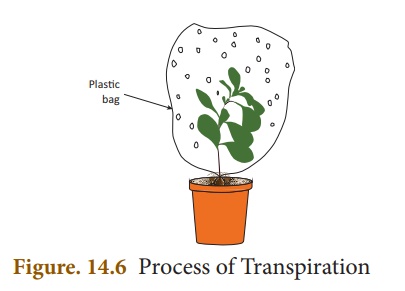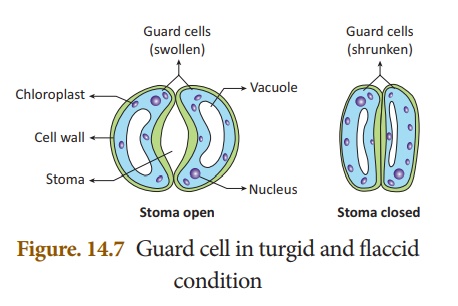Chapter: 10th Science : Chapter 14 : Transportation in Plants and Circulation in Animals
Transpiration in Plants
Transpiration
Transpiration is the
evaporation of water in plants through stomata in the leaves. Stomata are open
in the day and closed at night. The opening and closing of the stomata is due
to the change in turgidity of the guard cells. When water enters into the guard
cells, they become turgid and the stoma open. When the guard cells lose water,
it becomes flaccid and the stoma closes.

Water evaporates from
mesophyll cells of leaves through the open stomata, this lowers water
concentration in mesophyll cells. As a result, more water is drawn into these
cells from the xylem present in the veins through the process of osmosis. As
water is lost from the leaves, pressure is created at the top to pull more
water from the xylem to the mesophyll cells, this process is called transpiration
pull. This extends up to the roots causing the roots to absorb more water
from the soil to ensure continuous flow of water from the roots to the leaves.
Transpiration is
affected by several external factors such as temperature, light, humidity, and
wind speed. Internal factors that affect transpiration include number and
distribution of stomata, percentage of open stomata, water status of the plant,
canopy structure etc.

Importance of Transpiration
·
Creates transpirational pull for transport of water
·
Supplies water for photosynthesis
·
Transports minerals from soil to all parts of the plant
·
Cools the surface of the leaves by evaporation.
·
Keeps the cells turgid; hence, maintains their shape
Related Topics